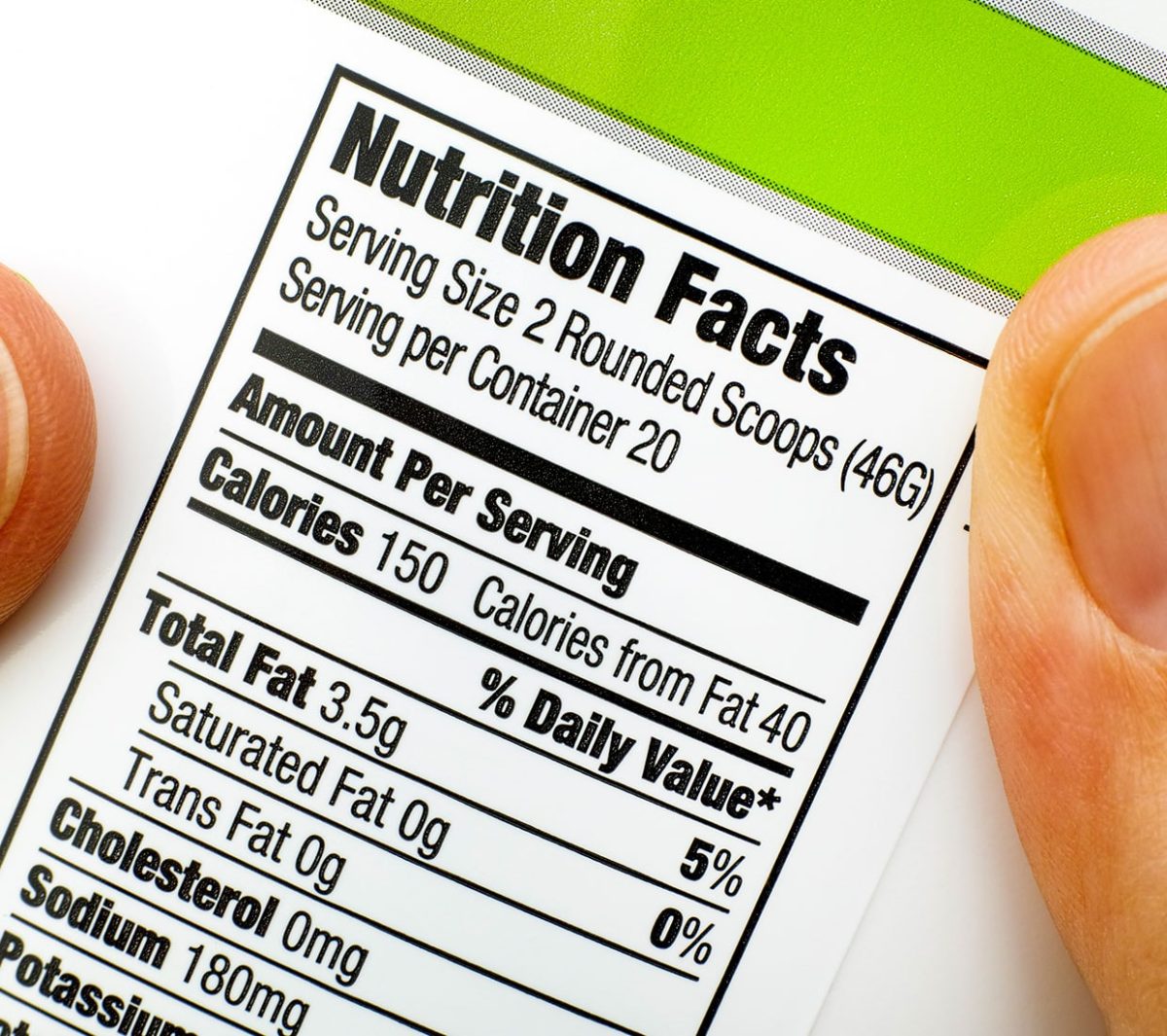Food labels mentioned on packaged food you buy can be very confusing for an untrained eye, which is why so many don’t even bother to read the nutritional information and rely on the claims on the label.

Ramona D. Lehadus Nutritionist, Health & Wellness Expert underlines the fact that “Being aware of the ingredients in your food, gives you control over your health.”
Decoding Nutritional Label for Weight Loss:
Do not believe the claims on the front of the label
(healthy, heart-healthy, low fat) as these are not regulated, hence not verified. For e.g. A “sodium-free” mention on the packet means that the food contains less than 5 mg of sodium. Similarly, “Low fat” means that the food contains less than 3 grams of fat in the amount of food packed.
Read the list of ingredients:
The first ingredient represents 70%+ of the total quantity of the item; if there are more than 5 ingredients, it is an ultra-processed item and you better avoid it; if you cannot pronounce any of the ingredients on the list, do not eat it. Avoid sugar alternatives (i.e., aspartame), butter/fat alternatives (vegetable oils, margarine, palm oil). – if there are synthetic colours and flavours (usually Es) do not eat them.

Health Coach & founder Two Hearts Nutrition, Carrie Bonfitto adds in that “Manufacturers love to hide sugar in their foods to increase the pleasure you gain from eating their product. It is a flavor enhancer, preservative, and packs on the pounds! Even so-called healthy foods like yogurt, almond milk, dried fruit, granola, and gluten-free products are loaded with sugars. And manufacturers use different names to better hide sugar on the label.”
Check the Serving Size and energy/ calories per serving
The lower the serving, the higher the number of calories. According to Holly Klamer, MS, RDN, Michigan-based Registered Dietitian Nutritionist (RDN) & writer with MyCrohn’sandColitisTeam.
“The serving size on the food package may or may not be how much you eat. If eating more than the serving size, recognize the nutritional information is going to be more than what you see on the label. Vice versa for eating less than the serving size: the nutritional information (calories, fat, etc.) will be less.”
The percent Daily Value (%DV) on the right-hand side of the food label can be another confusing part of the nutrition label.
According to Holy “It does not reflect what percent of the food is fat, cholesterol, carbohydrate, etc. Rather, it is what percent of nutrients this food provides based on total daily intake.” She further clarifies” For example, the 5% DV for fat means this food serving provides 5% of the recommended “goal” of daily fat intake based on a 2,000-calorie diet. If you do not eat 2,000 calories, these DV percentages will be lower or higher.”
Avoid unhealthy combinations of high sugar high fat and high sodium.
If unsure, don’t eat it. Diana Gariglio-Clelland, Registered Dietitian and Certified Diabetes Care and Education Specialist stress the fact that “Excess added sugar in the diet, along with other lifestyle factors, can lead to insulin resistance and blood sugar problems. Having insulin resistance can make it harder to lose weight and can result in unwanted weight gain, which is why paying attention to the added sugars and serving sizes on food labels is important.”
Choose foods that are low in saturated and extremely low in trans fats, as they can raise your blood cholesterol and increase your risk of heart disease. On the other hand, polyunsaturated and monounsaturated fats can help lower your cholesterol.
To target weight loss, avoid combinations
high in carbohydrates and fat, and target products that have less than 10% of energy from carbohydrates and sugars.
Remember, Fiber is your friend!
Beware of whole-grain imposters. Choose bread, cereals, granola bars, crackers & pasta with at least 2 grams of fiber per serving.
Some Other Names for Sugar on Labels
Cane, syrup, malt, maltodextrin, molasses, honey, caramel, starch, turbinado, fruit juice, natural flavors, sucrose, maltose, dextrose, fructose, glucose, galactose, lactose, diastase, diastatic malt, ethyl maltol.
These hidden sugars called Added Sugars are measured in the Nutrition Facts. But remembering how many grams OK are in one day and then adding up all the products you are eating can be overwhelming. It is easier to just have one simple rule:
Health Coach, Bonfitto concludes from her experience “If you avoid eating any product that contains any of the words for sugar in the first 3 ingredients, you will keep your sugar intake low and your waistline slim”.